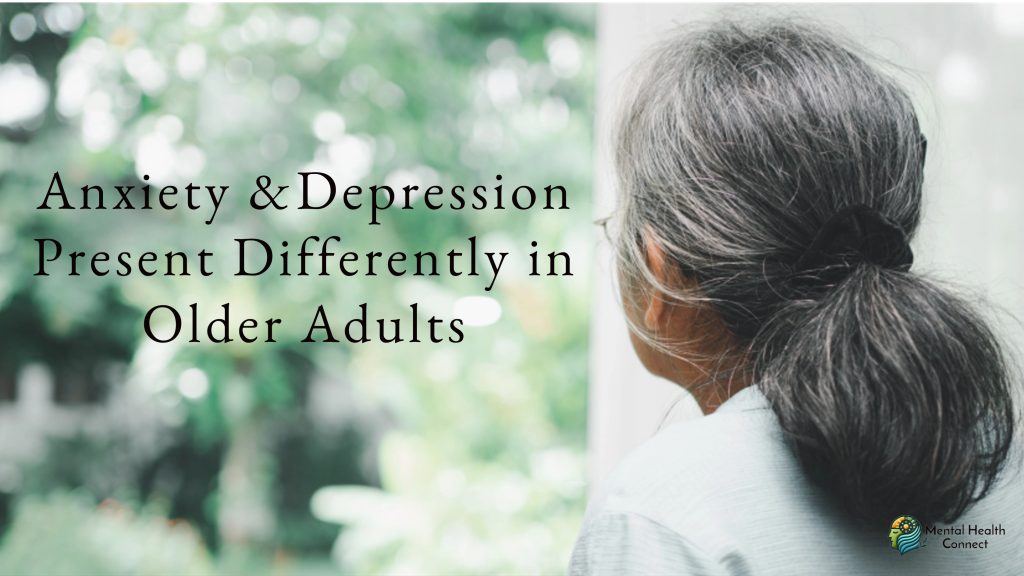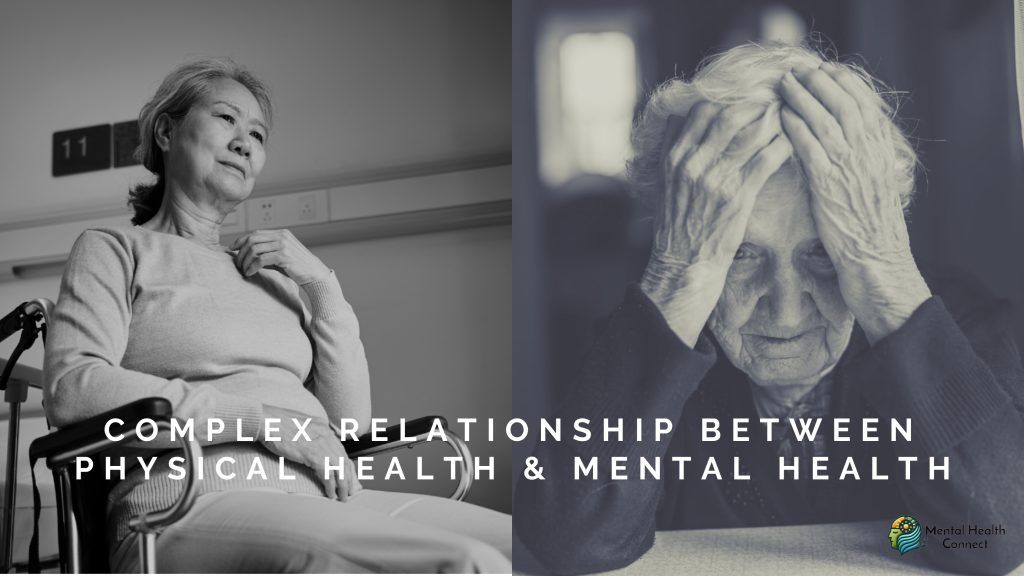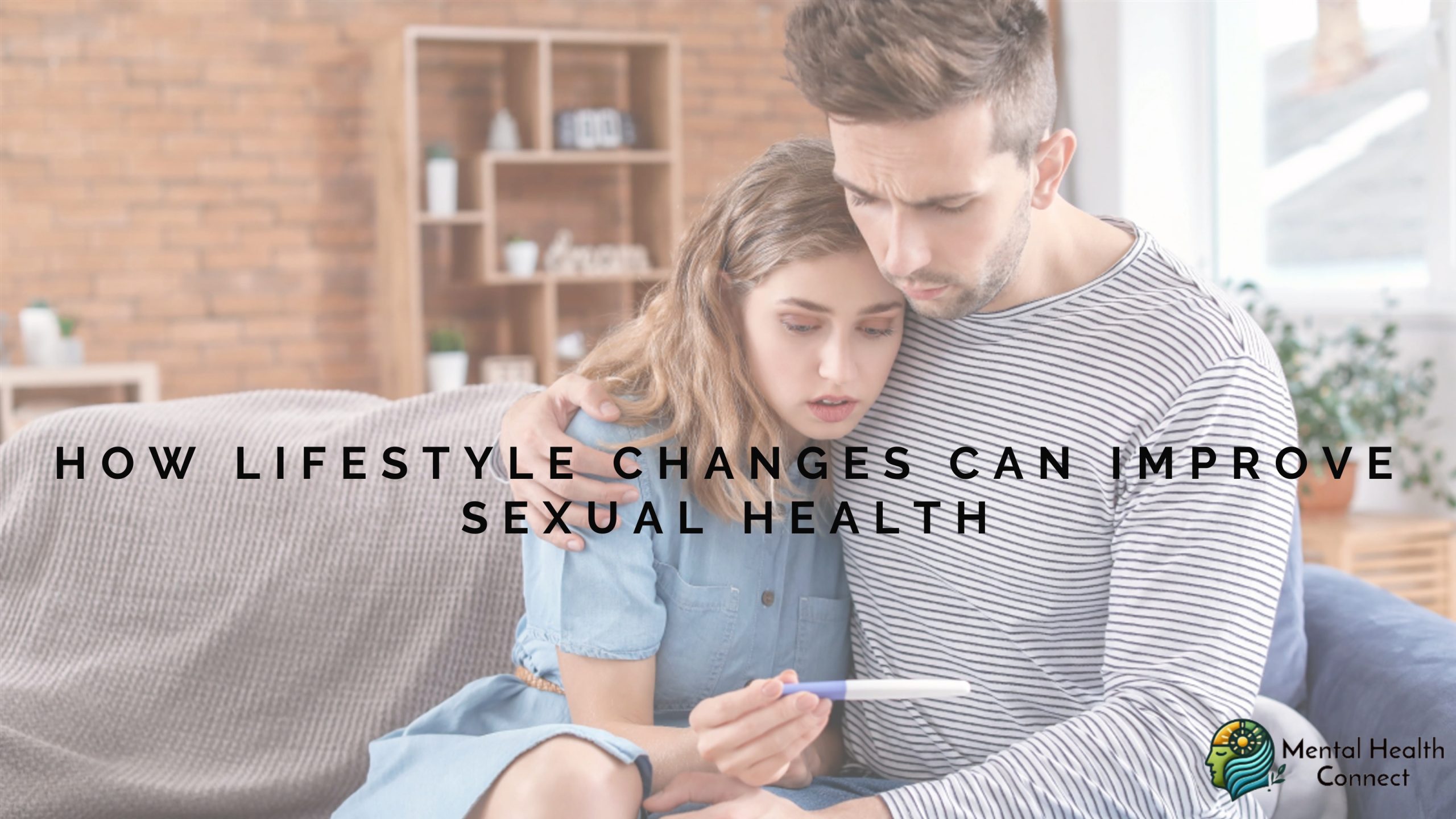Mental Health Challenges in Aging: Anxiety and Depression

Mental health concerns are significant at every stage of life, but they take on unique dimensions as we age. Despite common misconceptions that anxiety and depression are natural parts of growing older, these conditions are neither inevitable nor normal aspects of the aging process. Understanding the specific manifestations, risk factors, and effective interventions for mental health challenges in older adults is crucial for promoting wellbeing in later life.
The Prevalence of Anxiety and Depression in Older Adults
While popular perception might suggest that mental health issues increase with age, the data tells a more nuanced story:
· According to the World Health Organization, approximately 15% of adults aged 60 and over suffer from a mental disorder
· Depression affects approximately 7% of the older adult population worldwide
· Anxiety disorders occur in about 10-15% of older adults
· These conditions are often underdiagnosed and undertreated in this population
Interestingly, some research suggests that certain forms of emotional wellbeing may actually improve with age, with older adults reporting fewer negative emotions and greater emotional stability than younger counterparts. However, when mental health conditions do occur in older adults, they often present differently and can have more severe consequences if left untreated.
How Anxiety and Depression Present Differently in Older Adults

Mental health conditions in older adults frequently manifest in ways that differ from younger populations:
Depression Presentation in Older Adults
· More somatic complaints: Older adults often report physical symptoms rather than emotional ones, such as persistent pain, gastrointestinal issues, or fatigue
· Less sadness, more apathy: Rather than expressing sadness, older adults may present with lack of interest, decreased energy, or withdrawal
· Cognitive complaints: Memory problems, confusion, or attention difficulties may be prominent and sometimes mistaken for dementia
· Irritability and agitation: Compared to the traditional gloomy mood, irritability and agitation may be more prevalent symptoms.
· Vascular depression: Unique to older adults, this type can result from small blood vessel damage in the brain and tends to include more cognitive symptoms
Anxiety Presentation in Older Adults
· Excessive worry about health and safety: Concerns may focus intensely on physical health, falls, or becoming a burden
· Somatic manifestations: Heart palpitations, shortness of breath, dizziness, and GI distress may be the primary complaints
· Sleep disturbances: It’s usual to have trouble falling or staying asleep.
· Tension and restlessness: Anxiety’s physical symptoms, such as tense muscles, could be more noticeable than its psychological ones.
· Comorbidity with physical conditions: Anxiety symptoms often overlap with and exacerbate physical health conditions
Unique Risk Factors in Later Life

Several factors specific to aging can increase vulnerability to anxiety and depression:
Biological Factors
· Neurobiological changes: Natural changes in brain structure and neurotransmitter systems
· Chronic illness: Approximately 80% of older adults have at least one chronic medical condition
· Medication effects: Polypharmacy (taking multiple medications) can contribute to or mimic symptoms of depression and anxiety
· Pain: Persistent pain is strongly associated with both conditions
· Sensory impairments: Hearing and vision loss can lead to communication difficulties and social isolation
Psychological Factors
· Cognitive changes: Normal cognitive aging can cause worry about developing dementia
· Identity shifts: Retirement and role changes may impact sense of purpose and identity
· Increased existential concerns: Contemplation of mortality becomes more immediate
· Accumulated trauma: Lifetime experiences of trauma can have cumulative effects
· Grief and loss: The frequency of losses increases with age
Social Factors
· Diminishing social network: Death of spouse, friends, and family members
· Retirement: Loss of work-related social connections and structure
· Caregiving responsibilities: Many older adults become caregivers for spouses or partners
· Financial strain: Living on fixed incomes during inflationary periods
· Ageism: Experiencing age-based discrimination and negative stereotypes
· Relocation: Moving to retirement communities, assisted living, or with family members
The Complex Relationship Between Physical and Mental Health

In older adults, the mind-body connection becomes increasingly evident:
Bidirectional Influences
· Physical illness affecting mental health: Conditions like Parkinson’s disease, thyroid disorders, and cardiovascular disease can directly cause or worsen depression and anxiety
· Mental health affecting physical outcomes: Depression and anxiety can weaken immune function, slow recovery, and increase pain perception
· Medication interactions: Treatments for physical conditions may worsen mental health symptoms
The Vascular Depression Hypothesis
Research has identified a specific subtype of late-life depression associated with cerebrovascular changes:
· Small vessel disease in the brain can disrupt neural circuits involved in mood regulation
· This type of depression often responds differently to treatment and has more cognitive symptoms
· It highlights the importance of cardiovascular health in maintaining mental wellbeing
Barriers to Recognition and Treatment
Despite effective treatments being available, several obstacles prevent proper care:
Diagnostic Challenges
· Symptom overlap: Depression and anxiety symptoms can mimic or be masked by physical illness
· Atypical presentation: As noted above, older adults often present with somatic rather than emotional complaints
· Cognitive impairment: Memory or cognitive problems can complicate assessment
· Diagnostic bias: Healthcare providers may normalize mental health symptoms as “expected” in aging
Treatment Access Barriers
· Generational stigma: Older cohorts may have stronger stigma against mental health treatment
· Practical challenges: Transportation limitations, cost concerns, and physical disabilities can make accessing care difficult
· Provider shortages: Geriatric mental health specialists are in short supply
· Insurance limitations: Medicare coverage for mental health services has historically had limitations
Evidence-Based Interventions for Older Adults
Fortunately, several approaches have demonstrated effectiveness for anxiety and depression in later life:
Psychotherapy Approaches
· Cognitive Behavioral Therapy (CBT): Strong evidence supports CBT adapted for older adults, addressing age-specific concerns and using appropriate pacing
· Problem-Solving Therapy: Particularly effective for depression related to concrete life challenges
· Interpersonal Therapy: Helpful for addressing role transitions and grief
· Reminiscence and Life Review Therapy: Structured review of life experiences to foster meaning and integration
· Mindfulness-Based Interventions: Growing evidence supports their effectiveness for both anxiety and depression
Pharmacological Approaches
· Antidepressants: SSRIs are generally preferred due to fewer side effects and drug interactions
· Anxiolytics: Generally used cautiously and short-term due to increased sensitivity to side effects
· Dose considerations: Treatment often begins at lower doses with more gradual titration
· Medication management: Close monitoring for side effects and drug interactions is essential
Lifestyle and Social Interventions
· Physical activity: Strong evidence supports exercise as an effective intervention for both prevention and treatment
· Social engagement: Programs that foster meaningful social connection show significant benefits
· Volunteer work: Providing service to others offers purpose and social integration
· Arts participation: Growing evidence supports benefits of creative engagement
· Nature exposure: Time in natural settings has demonstrated mental health benefits
Innovative Approaches and Emerging Research
The field of geriatric mental health continues to evolve with promising developments:
Technology-Based Interventions
· Telehealth: Removing transportation barriers through video sessions
· Digital therapeutics: App-based interventions showing preliminary effectiveness
· Virtual reality: Being used for both assessment and therapeutic purposes
· Social robots: Emerging research on robotic companions for isolated older adults
Integrated Care Models
· Collaborative care: Primary care-based models that integrate mental health expertise
· IMPACT model: Improving Mood-Promoting Access to Collaborative Treatment has strong evidence for treating late-life depression
· Home-based programs: Services that reach older adults unable to travel to appointments
Prevention Strategies
Research increasingly focuses on preventing mental health conditions:
· Cognitive training: May build resilience against both cognitive decline and depression
· Social prescribing: Connecting older adults to community resources and activities
· Sleep interventions: Addressing sleep problems may prevent subsequent depression
· Lifestyle optimization: Mediterranean diet, physical activity, and cognitive engagement
Supporting Aging Loved Ones

Family members and friends can play crucial roles in supporting older adults’ mental health:
Recognizing Warning Signs
Look for changes such as:
· Withdrawal from previously enjoyed activities
· Changes in sleep or appetite
· Increased physical complaints without clear medical cause
· Expressions of hopelessness or excessive worry
· Memory or concentration problems
· Irritability or agitation
Helpful Approaches
· Listen non-judgmentally and validate experiences
· Encourage professional evaluation while normalizing mental health care
· Support attendance at appointments
· Learn about their conditions and treatments
· Help maintain social connections and meaningful activities
· Recognize your own limitations and seek support when needed
Creating Age-Friendly Communities for Mental Wellbeing
Broader societal approaches can support mental health in aging:
· Combating ageism: Challenging negative stereotypes about aging
· Creating accessible environments: Designing communities that facilitate social engagement
· Developing intergenerational programs: Fostering meaningful connections across age groups
· Supporting caregivers: Providing resources and respite for those caring for older adults
· Ensuring economic security: Addressing financial stressors that contribute to mental health challenges
Reimagining Mental Health in Later Life
The narrative around aging and mental health is evolving from one of inevitable decline to a more nuanced understanding that recognizes both vulnerabilities and strengths in later life. While anxiety and depression present real challenges for many older adults, they are neither inevitable nor untreatable.
With appropriate recognition, assessment, and intervention, mental health concerns in older adults can be effectively addressed, allowing for continued growth, meaning, and wellbeing in the later years. By combining advances in research with compassionate, person-centered approaches, we can support not just longer lives, but richer and more fulfilling ones.
As our global population ages, prioritizing mental health in later life becomes not just a medical necessity but a social imperative one that honors the continuing potential for development, contribution, and joy throughout the entire lifespan.
-
 How Lifestyle Changes Can Improve Sexual HealthApril 3, 2025
How Lifestyle Changes Can Improve Sexual HealthApril 3, 2025 -
 Treatment Options for Erectile DysfunctionApril 3, 2025
Treatment Options for Erectile DysfunctionApril 3, 2025

Leave a Reply